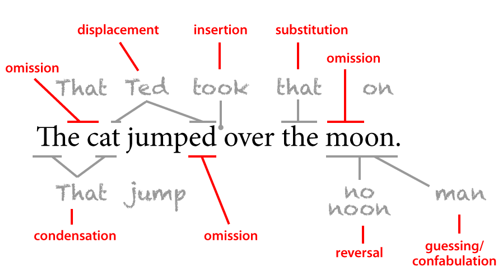Neurodivergence and perceptions of normality
1/9
There's no tags or description
Looks like no tags are added yet.
Name | Mastery | Learn | Test | Matching | Spaced |
|---|
No study sessions yet.
10 Terms
Normality
This, not reality - or not logical positivism/positivism
Perceiving this - processing information, how the world is 'put together'
Gestalt perception, colour 'blindness', smell in pregnancy, hearing those who are deaf - different capacities and propensities processing sensory information
Who decides? Normal is just the largest number of people, 'outliers' are statistically determined. It's not if it's there or not, but how it's perceived, how the brain processes information
Processing
Of colour (e.g., colour-blindness test)
Of context (picture) (local vs global processing of information) (Gestalt processing - the whole is more than the sum of its parts (e.g., only seeing the pram and not the triangle))
Of Shape and Structure (in words/sentences - example of dyslexia, in numbers - example of dyscalculia) (picture too)

ADHD
Symptoms in adults:
Attention - processing of auditory, visual information
Concentration - inhibition, emotion regulation (difficulty with conscious control)
Organisation - prospective memory, processing speed, time management
Symptoms in children (typically the 'beginning' of symptoms that are present in adulthood):
Processing of time
Motivation - thinking ahead (increased difficulty in such)
Motor skills - inhibiting movements/desire to move
Autism
These people have different ways of processing information, which results in differences in thinking and behaving
Complexity and comorbidity:
Simple vs complex information processing differences (colour blindness vs autism; impacts on daily life (socialising, employment, independence, community))
Bottom-up vs top-down processing (but where is the line between conscious and developed into unconsciousness or something inherently present drawn?)
Comorbidity (approx. 40% also have ADHD, diagnosis of dyslexia, x8 something of NDD idk the slide moved fast)
Currently classified as a developmental disorder in medical diagnostic manuals;
Includes Kanner’s/childhood autism, Asperger's Syndrome and pervasive developmental disorder.
Occur with an intellectual disability (IQ<70, social and adaptive functioning difficulties) and without (IQ>100).
At least 1 in a 100 people, 1% of population (Baird, 2001) but likely more.
Prevalence not increasing, improved identification and change in classification (Baron-Cohen et al., 2009; Wing & Gould, 1979).
Neurodivergence
Coined originally in relation to autism but now taken as an 'umbrella' term to also capture ADHD, Dyslexia, Dyscalculia, etc
The way the brain processes information - it processes, learns, and/or behaves differently from what is considered 'typical'
Neurotypical
(Comparison)
Natural human variation - diversity (degree of variation in a given variable (all variations of normal), not just individual difference) (divergence is developing away from the norms)
Impact
(Of ‘diverging’)
Sensory processing of information - includes social information (such as facial expression and expressed behaviour)
Perception of information to interact in social situations - what you perceive affects social behaviours
Medical categories like Autism and ADHD are all different to normal, but have the same pattern of differences amongst themselves (hence why they are labelled differently)
Not mental illnesses - not transient, permanent, pervasive, across lifespan, span multiple domains.
Status quo
(Challenging this)
Social model of disability:
Disability rights movements
Impairment vs disability; impairment = an attribute that impact an individual, disability = systemic barriers, marginalisation, social exclusion which 'disable' the individual, limit or restrict their ability to achieve, function, participate
Concept of neurodivergence currently falls within a social model of disability
Autism research on communication between autistic individuals (Morrison et al., 2019; Heasman & Gillespie, 2019) - clashing of allistic and autistic communication styles, only one communication style is regarded as abnormal
Different normal
(Implications of having this)
Academic, schooling, engagement, learning, exams, achievement, qualifications
Jobs, opportunities, employment
Income, security, independence, pension
Making and maintaining friendships, romantic and sexual relationships, bullying, harassment
Love, marriage, family, community
Hobbies, activities, behaviour, anti-social, criminal
Healthcare, physical and mental wellbeing
How you're perceived is how normal understands (and treats) you
Criticisms
(Of neurodivergent movement)
It is not inclusive and does not capture everyone's voice/experience. Often the most able/articulate, speaking for all.
Some extreme forms of neurodiversity include intellectual (or learning) disability and mental illness such a schizophrenia, where it is harder to argue that this is a 'normal' non-detrimental experience/identity/disorder, that does not negatively impact quality of life.